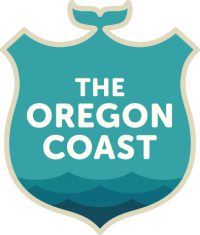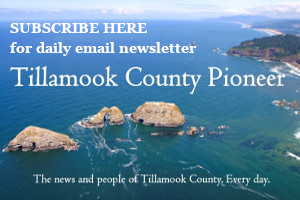Crabbing is an integral part of Oregon’s coastal culture, and this season the Oregon Coast Visitors Association and the Oregon Dungeness Crab Commission are excited to celebrate the season opening of Oregon’s commercial Dungeness crab fishery.
Season Opening Details
The fishery opened from Cape Falcon (Oswald West State Park) in the north, to the California border in the south, on December 16. Oregon’s north coast will open at a later date, when testing for biotoxins and meat yield indicates the highest quality product. (See update from Oregon Department of Fish & Wildlife.)
According to the Oregon Department of Fish and Wildlife, the commercial fleet began the presoak period on December 13 from Cape Falcon to the California border. The presoak time – setting baited crab pots in the water – gives permit holders a chance to get their gear out in an equitable, organized, and safe manner.
Heritage and Fishing Practices
Oregon Dungeness crab, an integral part of the Northwest’s seafood heritage, has been harvested commercially since the late 1800s. Crabs are caught in circular steel traps, commonly called pots, that weigh between 60 and 125 pounds. Each pot has a buoy attached, marked for retrieval. The average boat fishes 200 to 500 pots, and crabs are sorted alive on vessels in circulated seawater until they are delivered to shore-side processing plants before finding their way to restaurants and markets for all to enjoy.
The Oregon Dungeness crab fishery is one of the few remaining state-managed fisheries in the country. The simple harvest system of ‘size, sex, and season’ results in minimal catch mortality. Conservation is at the forefront and includes gear regulations, escape rings for females and undersized males, and biodegradable components on lid closures so lost pots in winter storms will release trapped crabs.
Supporting Coastal Communities
Buying Oregon Dungeness crab supports Oregon Coast communities and economies. Local fishers work long, tireless hours, risking their lives and leaving their families behind, to deliver Oregon Dungeness crab to markets and tables.
There are a variety of ways to enjoy fresh Oregon Dungeness crab, whether in sauces, appetizers, side dishes, or as the main course. For a list of ways to buy, recipe inspiration, as well as cooking, cleaning, and serving tips, visit the Oregon Dungeness Crab Commission website.
 The Oregon Dungeness Crab Commission was established in 1977 by an act of the Oregon Legislature as an industry-funded agency and part of the Oregon Department of Agriculture’s Commodity Commission program. This unique assembly of eight members allows for pooled funds to increase recognition, value, and use for Oregon Dungeness crab. Oregon Dungeness Crab Commissioners are appointed by the Director of the Oregon Department of Agriculture. The Oregon Dungeness Crab Commission consists of eight members, including five from the harvesting sector (crab fishermen), two representing crab processors, and one public at-large member. Commissioners serve three-year terms.
The Oregon Dungeness Crab Commission was established in 1977 by an act of the Oregon Legislature as an industry-funded agency and part of the Oregon Department of Agriculture’s Commodity Commission program. This unique assembly of eight members allows for pooled funds to increase recognition, value, and use for Oregon Dungeness crab. Oregon Dungeness Crab Commissioners are appointed by the Director of the Oregon Department of Agriculture. The Oregon Dungeness Crab Commission consists of eight members, including five from the harvesting sector (crab fishermen), two representing crab processors, and one public at-large member. Commissioners serve three-year terms.
The mission of the Oregon Dungeness Crab Commission is to enhance the image of crab fisheries through promotion, education, and research. Of utmost importance is practicing sustainability, ensuring a healthy ocean with long-term ecological benefits that help guarantee the hundred-plus year industry is maintained for future generations.

The Oregon Coast Visitors Association (OCVA) is the official Regional Destination Management Organization for the entire Oregon Coast as designated by the Oregon Tourism Commission (dba Travel Oregon). OCVA inspires travel and strengthens collaboration to create and steward a sustainable coastal economy.
OCVA has the honor of working with coastal communities to align partnerships, destination development projects, and destination marketing with the vision of creating “a coastal utopia for all.” This includes coastal stakeholders, new and returning visitors, and the natural resources that make these coveted experiences so magical.


